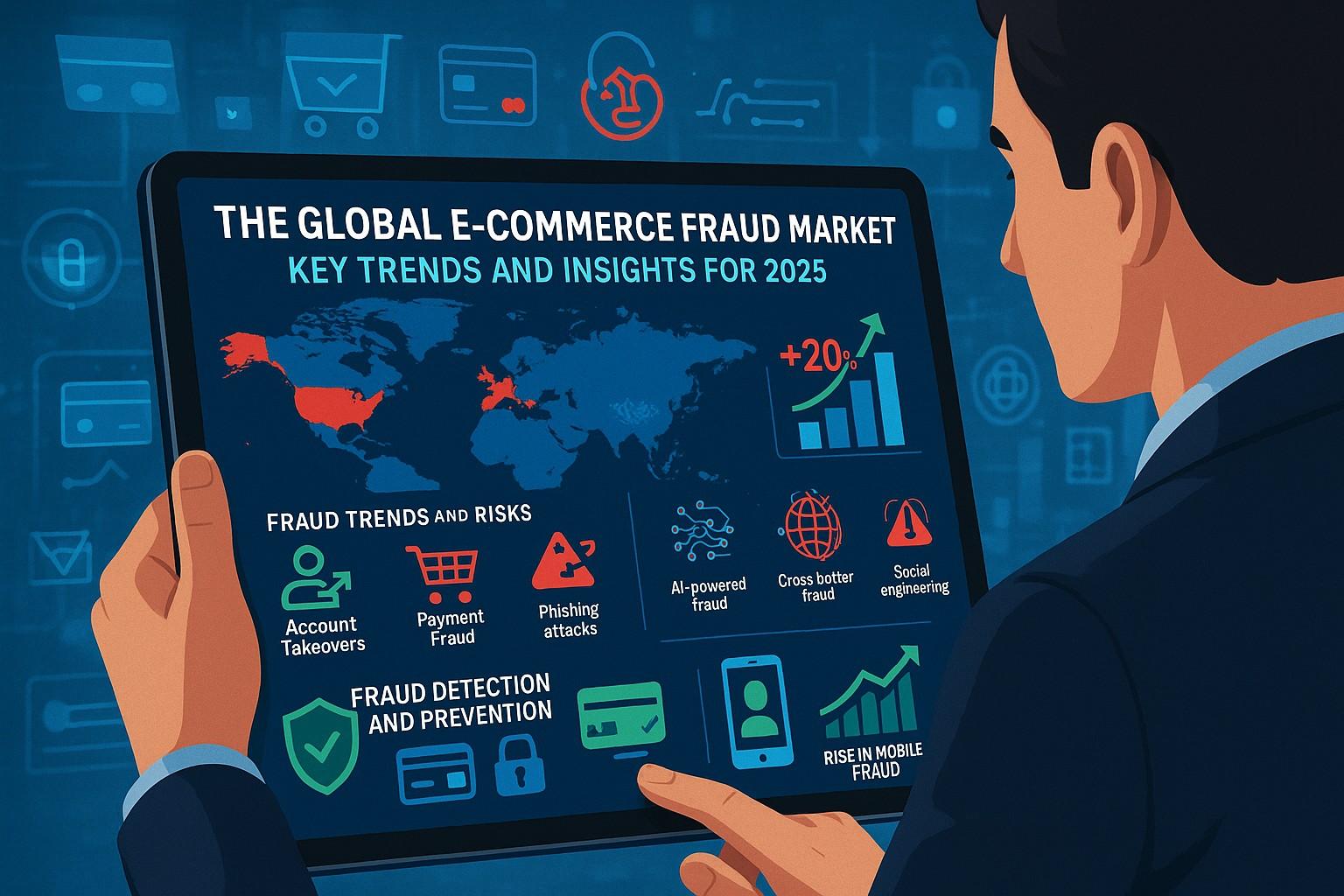Chargeback Management Services - Dispute Response Sep/ 3/ 2025 | 0
E-commerce fraud continues to be a significant challenge for businesses worldwide, with fraudsters constantly evolving their tactics. As e-commerce grows, so does the complexity of fraud schemes targeting merchants, consumers, and payment processors alike. In this article, we’ll explore the global e-commerce fraud market, highlighting the latest trends, emerging threats, and best practices for mitigating fraud risks in 2025.
The Surge in E-Commerce Fraud
In 2025, the e-commerce industry is expected to face a rise in fraudulent activities, driven by the rapid adoption of online shopping, digital payment solutions, and emerging technologies. Fraudsters are leveraging sophisticated techniques to exploit vulnerabilities, creating a dynamic landscape for e-commerce businesses to navigate.
Common E-Commerce Fraud Schemes in 2025
- Account Takeover Fraud
Account takeover remains one of the most dangerous fraud schemes, with criminals gaining unauthorized access to customer accounts. Once inside, they can make purchases, alter account details, and commit further fraudulent activities. - Friendly Fraud
Consumers who make purchases with no intention of paying for them may file chargebacks, claiming they didn’t receive the product or that it was damaged. This type of fraud, known as friendly fraud, continues to grow in frequency and sophistication. - Card Not Present Fraud
Fraudsters increasingly target online transactions where the card is not physically present. With stolen payment details, they can make unauthorized purchases on e-commerce platforms. - Shipping Fraud
Fraudulent transactions involving the use of stolen credit card information to purchase goods, followed by shipping those goods to an address that doesn’t belong to the cardholder, are becoming more prevalent.
Key Drivers of E-Commerce Fraud
The rise in e-commerce fraud can be attributed to several factors, including:
- Increased Online Transactions
As more consumers turn to online shopping, the volume of transactions increases, providing more opportunities for fraud. - Lack of Robust Security Protocols
Many merchants still fail to implement the latest security measures, such as multi-factor authentication and tokenization, which leaves their platforms vulnerable to cyber-attacks. - International Fraud Rings
Organized fraud rings continue to operate across borders, using sophisticated methods to bypass security measures and target e-commerce businesses.
Strategies for Mitigating E-Commerce Fraud
Merchants must take proactive steps to defend against fraud in the evolving landscape. Here are some effective strategies to minimize risk:
Implementing Advanced Fraud Detection Tools
Utilize AI-driven fraud detection systems that analyze transaction data in real-time, flagging suspicious activities based on patterns and behaviors. These tools are essential for identifying fraud before it causes significant harm to your business.
Strengthening Payment Security
Invest in secure payment gateways that utilize encryption, tokenization, and 3D Secure technology to protect payment transactions from unauthorized access.
Educating Customers
Educating customers about the risks of fraud and encouraging them to use strong passwords, monitor their accounts, and report suspicious activity can help prevent account takeovers and friendly fraud.
Regular Fraud Audits
Conduct regular audits of your payment systems and transaction data to identify vulnerabilities and improve fraud detection capabilities.

Email us anytime!
Email customer service 24/7

Call us anytime!
Reach customer care 24/7 at +1 (888) 927-5152
Conclusion
As the global e-commerce fraud market evolves in 2025, businesses must stay ahead of emerging threats by adopting innovative fraud prevention strategies and technologies. By taking a proactive approach, merchants can protect their revenue, safeguard customer trust, and ensure a secure shopping experience for all.


